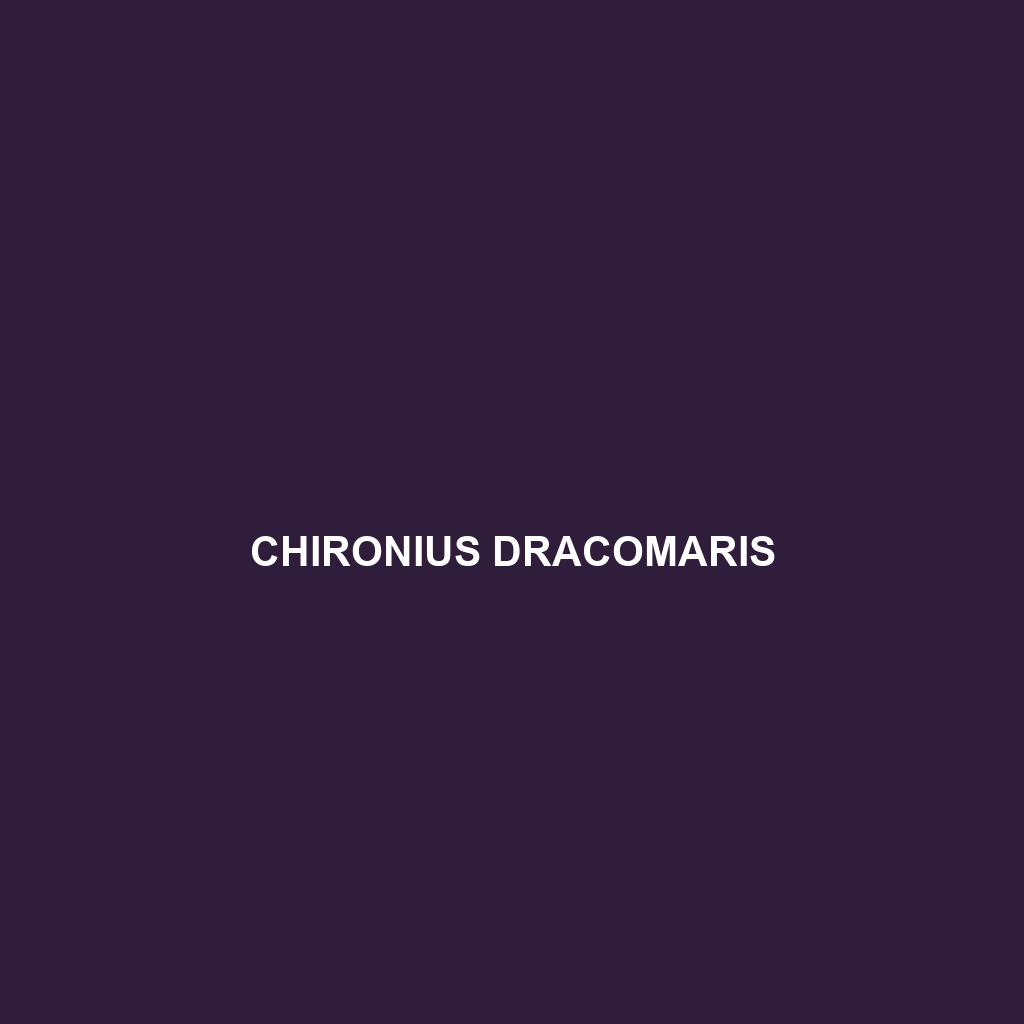Species Description: Chironius dracomaris
Common Name: Chironius dracomaris
Scientific Name: Chironius dracomaris
Habitat: Chironius dracomaris is primarily found in the tropical regions of Central and South America, notably in countries such as Colombia, Ecuador, and Brazil. These snakes favor humid environments, often inhabiting dense rainforests near rivers, swamps, and marshes. Their preference for warm, moist habitats makes them a notable species in these rich ecosystems.
Physical Characteristics: Chironius dracomaris, commonly known as the dragon snake, can reach lengths of up to 1.5 meters (approximately 5 feet). This species is characterized by its vibrant green coloration, marked with striking yellow or black patterning. Its slender, elongated body and distinctive triangular head set it apart from other species, making it easy to identify. The scales are smooth, adding to its sleek appearance.
Behavior: Active primarily during the day (diurnal), Chironius dracomaris is known for its agile movements, often seen climbing trees or basking in the sun. This snake is not venomous and relies on its speed and camouflage to evade predators. Its behavior includes hunting in low to moderate vegetation where it tends to stalk its prey quietly. Mating rituals involve a series of courtship behaviors, including body wrapping and displays of agility.
Diet: The diet of Chironius dracomaris primarily consists of amphibians, notably frogs, and small reptiles, including lizards. This species is an opportunistic feeder, often foraging in its habitat during the warmer hours. Its feeding habits contribute to controlling the populations of its prey, serving a crucial role in maintaining ecological balance.
Reproduction: Chironius dracomaris exhibits oviparous reproductive habits, typically laying clutches of 6 to 15 eggs during the wet season. The breeding season occurs from late spring to early summer, ensuring that the offspring hatch when environmental conditions are optimal. The eggs are laid in concealed locations to protect them from predators, and hatchlings are independent from birth, showcasing a remarkable survival instinct.
Conservation Status: The conservation status of Chironius dracomaris is currently listed as “Least Concern” by the IUCN; however, ongoing habitat destruction poses potential threats. Conservation efforts are crucial to maintaining stable populations and ensuring that this unique species thrives in its natural habitat.
Interesting Facts: One fascinating aspect of Chironius dracomaris is its unique ability to change coloration slightly with its surroundings, enhancing its camouflage. Additionally, this species is often considered a bioindicator, meaning that its presence can provide insights into the health of its ecosystem.
Role in Ecosystem: Chironius dracomaris plays an essential role in its ecosystem as both predator and prey, contributing to the biodiversity of its habitat. By controlling populations of frogs and lizards, it helps maintain a balance in the food web. Furthermore, it serves as a food source for larger predators, thus supporting the greater ecological community.

